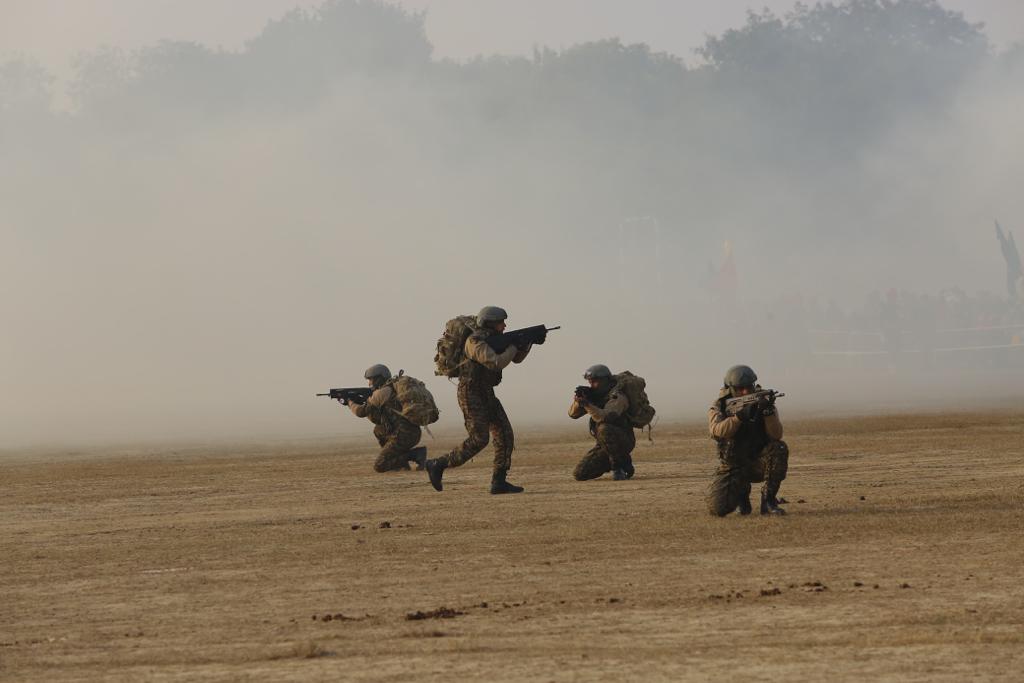
In a move that could significantly reshape the Indian Army’s manpower policy, a major proposal is on the table — to increase the Agniveer retention rate from 25 percent to 75 percent. This proposal will be discussed in detail at the Army Commanders’ Conference, scheduled to be held in Jaisalmer on October 23 and 24, 2025.
According to defence sources, the issue has gained urgency as the first batch of Agniveers is set to complete its four-year tenure next year. The conference is expected to take a final view on how many Agniveers should be retained permanently and what reforms are needed in training, welfare, and career management.
Why the Agniveer Retention Policy Matters
When the Agnipath scheme was launched in 2022, it introduced a new short-term recruitment system where young men and women, called Agniveers, are inducted into the armed forces for a four-year period. After completion of their term, only 25% are retained for full-time service while the remaining 75% are released with a financial package and priority for civil jobs.
However, after three years of implementation, feedback from the field units and commanders has raised concerns about losing trained, disciplined, and skilled soldiers too early. Many believe that retaining a larger number of Agniveers will help maintain operational stability, reduce training costs, and ensure that units do not constantly lose experienced personnel just as they reach peak efficiency.
A jump to 75% retention could therefore mean that the Army would retain the majority of trained Agniveers — a move that could balance the scheme’s original goal of youthfulness with the practical need for continuity and combat readiness.
👉HOW TO REGISTER AND LOG IN TO THE ECHS BENEFICIARY APP
Conference to Review Broader Military Reforms
The Army Commanders’ Conference is a biannual high-level meeting of the Army’s top leadership. It provides a formal platform for senior commanders to review national security challenges, assess the operational situation along borders, and deliberate on human-resource, logistics, and welfare issues.
The Jaisalmer conference is particularly important as it is the first major meeting since Operation Sindoor in May 2025, and comes amid a broader push to strengthen jointness among the Army, Navy, and Air Force.
The discussions will focus on:
- Increasing Agniveer retention and reviewing the Agnipath scheme outcomes.
- Enhancing jointness across the three services for greater interoperability.
- Assessing Mission Sudarshan Chakra, which deals with coordination between services and infrastructure preparedness.
- Operational readiness, including emergency procurement of critical equipment, stocking of ammunition, and replacement of worn-out systems.
- Personnel welfare and the effective use of veterans’ experience in ongoing operations and administrative support.
Harnessing the Strength of Veterans
With the growing number of ex-servicemen (ESM) in the country, the Army is exploring new ways to involve veterans in active and meaningful roles. Currently, most veterans contribute through organisations such as the Army Welfare Education Society (AWES) or serve at ECHS polyclinics.
The Army is now considering expanding these opportunities — allowing veterans to contribute to training centres, recruitment offices, logistics, and administrative establishments.
This approach not only recognises the lifetime expertise of retired personnel but also helps maintain a living bridge between serving soldiers and those who have hung up their uniform.
Sources say the new plan may include contractual or part-time roles for experienced veterans in mentoring, welfare, and technical supervision, ensuring that the institutional memory of the Army continues to serve future generations.
Jointness and Theatre Command Progress
Another major focus area of the conference is the progress towards theatre commands — integrated formations where all three services operate under a unified command structure.
Steps already under implementation include:
- Standardisation of weapons and communication systems across services.
- Common logistics and procurement chains to reduce duplication and improve efficiency.
- Combined training programs at various levels to build inter-service understanding.
- Cross-posting of officers and men between services for broader exposure.
- Merger of education branches into a single Tri-Services Education Corps, announced at the Combined Commanders’ Conference in Kolkata last month.
These measures are designed to ensure that the Army, Navy, and Air Force can work seamlessly together in both peacetime and operations — an essential step towards modern warfare integration.
Mission Sudarshan Chakra and Operational Preparedness
The Mission Sudarshan Chakra, which aims to streamline logistics, strengthen border infrastructure, and ensure readiness for multi-domain warfare, will also be reviewed.
Discussions will cover the repair and replacement of damaged vehicles and equipment, faster procurement of critical ammunition, and improving coordination with other agencies to enhance combat readiness.
The Army Commanders are expected to take stock of how well different formations are meeting readiness targets and where immediate support is required.
This Jaisalmer phase follows the first phase of the conference held in New Delhi earlier this month, where administrative and policy issues were discussed. The desert setting of Jaisalmer, close to operational zones, will allow commanders to directly assess field conditions and interact with troops deployed in the area.
Looking Ahead
The upcoming decision on Agniveer retention is likely to shape the future of the Army’s human-resource structure for the next decade.
Raising the retention rate to 75% would mean greater job security for Agniveers, stronger morale within units, and a more experienced fighting force — while still allowing the Army to recruit fresh blood periodically to keep its average age young.
At the same time, this change would require adjustments in budget allocations, career planning, and training infrastructure, since more soldiers would now transition into permanent service.
Senior officials emphasise that any final decision will be taken after detailed analysis of operational needs, manpower planning, and financial implications.
👉 EMERGENCY TREATMENT & CLAIMS PROCESS UNDER ECHS

Conclusion
The Jaisalmer Army Commanders’ Conference 2025 is being viewed as one of the most significant in recent years. It not only addresses the crucial issue of Agniveer retention but also focuses on strengthening jointness, veteran participation, and mission readiness.
For the Indian Army, this is not merely an administrative discussion — it’s a defining moment to balance youth and experience, reform and tradition, and operational efficiency with human welfare.
If approved, the increase in Agniveer retention from 25% to 75% could mark the beginning of a new era in India’s defence manpower policy — one that preserves the spirit of the soldier, the strength of the system, and the pride of the uniform.





